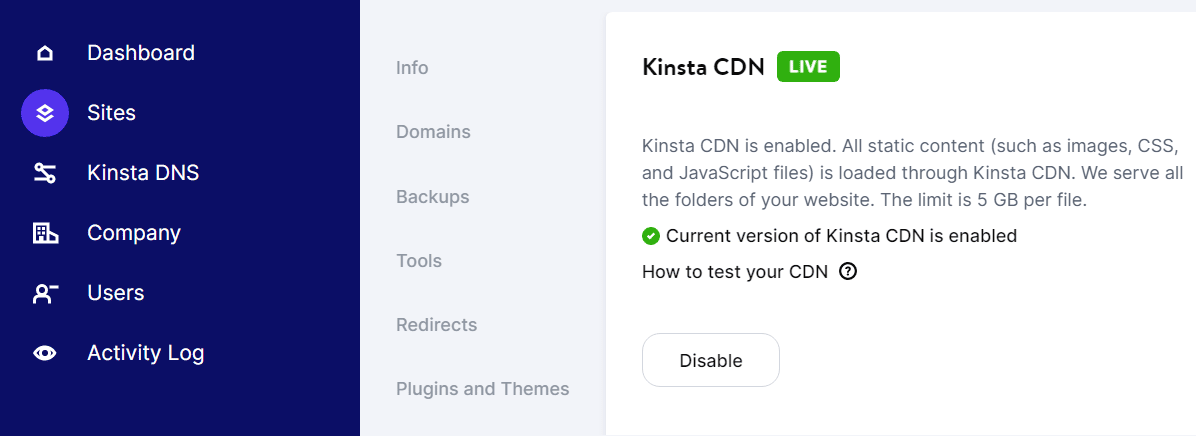As you may already know, Kinsta integrates with Cloudflare to offer Content Delivery Network (CDN) services to all our clients. Typically, that integration works seamlessly. However, since Cloudflare is a separate platform from Kinsta, you may encounter occasional errors while using the CDN. One of the most common bugs is “Error 1014: CNAME Cross-User Banned”.
Error 1014 indicates an issue with the CNAME records associated with your Cloudflare account. Fortunately, the error is easy enough to fix if you don’t mind digging into your Cloudflare domain settings. Once you do so, users can access your site as usual.
In this article, we’ll talk about what error 1014 means and what causes it. Then we’ll go over several ways to fix the error through your Cloudflare account. Let’s get to it!
Check Out Our Video Guide to Fixing the Error 1014: CNAME Cross-User Banned
What Does “Error 1014: CNAME Cross-User Banned” Mean?
A Canonical Name (CNAME) record is an alternative to an A record. You can use CNAME records for aliases or subdomains of another domain.
For example, if you have a website at store.mywebsite.com, it can have a CNAME record that points towards mywebsite.com.
When a visitor accesses a domain with a CNAME record, the Domain Name Server (DNS) lookup will point toward the records of the “parent” domain. In our example, the DNS lookup will return the IP address for mywebsite.com via its A record.
“Error 1014: CNAME Cross-User Banned” is a Cloudflare-specific error that appears when there’s a misconfiguration in CNAME records between domains across different Cloudflare accounts. Now, let’s talk about what that misconfiguration involves.
What Causes “Error 1014: CNAME Cross-User Banned”?
Cloudflare enables you to set up its CDN on as many domains as you need (depending on your plan). To do so, you’ll need to update your domain’s nameservers to point towards Cloudflare so that the CDN can start managing visits to your website.
“Error 1014: CNAME Cross-User Banned” appears when you have two different domains using Cloudflare, and one of them has a CNAME record pointing towards the other. If the domains are in different Cloudflare accounts, error 1014 will appear:

To put it another way, let’s say that you’re setting up store.mywebsite.com to work with Cloudflare. The subdomain has a CNAME record pointing towards mywebsite.com, but that domain is connected to a different Cloudflare account.
Cloudflare blocks this type of setup due to security reasons. You’ll need to fix the CNAME record for the CDN to resolve it.
Alternatively, you can contact Cloudflare to prove you’re authorized to point the CNAME record toward the second domain. We’ll discuss these fixes in detail in the next section of this tutorial!
How To Fix the “Error 1014: CNAME Cross-User Banned” Error: 3 Methods
Depending on your situation, there are several ways to fix error 1014 in Cloudflare. For this section, we’ll go over each method, starting with contacting support.
Method 1: Contact Cloudflare Support
Although Cloudflare prohibits pointing CNAME records to other domains using its service, the platform does make exceptions. If you want Cloudflare to let you set up a CNAME resolution to a domain that’s in a different account, the owner of that account can contact support and ask the company to lift the restriction.
Keep in mind that Cloudflare only enables Pro, Business, and Enterprise account users to ask for this exception. That means the owner of the target domain must have a Cloudflare plan that falls into one of those tiers.
Method 2: Disable Cloudflare for the Domain With the CNAME Record
If you don’t own the account with the target domain the CNAME record is pointing to; one alternative is to disable Cloudflare for the domain causing the problem.
By removing Cloudflare, you lose all the benefits of using a CDN. However, doing so will prevent error 1014 from appearing while you figure out alternatives.
To remove a domain from Cloudflare, you’ll need to log in to the dashboard and go to the Websites tab. Inside you’ll find a list of domains connected to Cloudflare:

Select a domain and look for the Advanced Actions section under its settings. Click on Remove Site from Cloudflare and confirm your choice.
If you’re a Kinsta user, you can disable your site’s CDN integration from the MyKinsta panel. To do so, log in to your MyKinsta dashboard and go to Sites. Select the website with the domain that’s showing error 1014 and open the Kinsta CDN tab.
Finally, click on Disable under the Kinsta CDN section, and that’s it:

Keep in mind that Kinsta’s Cloudflare integration is enabled by default for all new websites. If you just set up a site and it starts returning error 1014, its domain might already be associated with a different Cloudflare account.
Method 3: Replace the CNAME Entry With an A Record
Depending on which domain registrar you use, you should be able to update your domain’s DNS settings relatively easily.
For example, if you use Namecheap, you can access an Advanced DNS settings screen for any domain you own. From here, you can update or remove CNAME records:

With error 1014, the CNAME record is causing problems. Therefore, the easiest solution is to remove the CNAME record and replace it with an A record.
This means creating an A record pointing towards the same server as the CNAME entry. With most registrars, that process is as simple as entering the IP address (either IPv4 or IPv6) for the target server and selecting the host you want to point to it:

If you’re using a CNAME record to point a subdomain towards a target domain, you’ll need to enter the subdomain name into the Host portion of the A record (that’s the store value in the example above).
Once the A record is set up, it should work just the same as its CNAME predecessor did. However, loading times might be a bit higher since this type of record involves an additional DNS lookup.
Keep in mind that any changes that you make to your domain’s DNS settings can take a while to propagate. That means error 1014 might continue to appear for a few hours after you switch to an A name record.
Summary
If you use Cloudflare, you might run into error 1014, depending on how you configure your domain’s DNS records. Setting a CNAME record that points towards a second domain hosted in a different Cloudflare account will trigger error 1014 due to the platform’s internal security policies.
Error 1014 is not critical, but it can block user access to your website. To fix the error, we recommend first contacting Cloudflare support and asking them to lift the restriction. Otherwise, you will need to disable Cloudflare for the domain with the CNAME record. Alternatively, you can change the entry to an A record.
Kinsta CDN is a high-performance CDN available to Kinsta customers at no additional cost. It’s powered by our free Cloudflare integration and automatically serves your content from 275+ PoPs across the globe.
Plus, with a Kinsta hosting account, you’ll get access to Edge Caching, free website migrations, and our Kinsta APM tool to monitor the performance of your website. Check out our plans today!



